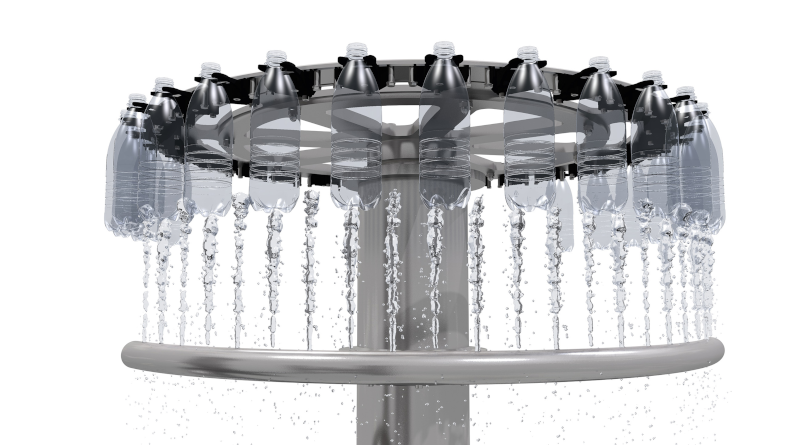Increased speed
KHS has introduced three improvements to its modular Innofill PET DRV filler, enhancing its capability for faster and more effective filling of still and carbonated beverages into PET bottles – even under extreme conditions.
The new Innofill PET DRV HC (high capacity) filler option provides the flexibility needed for filling large containers of 1.5 litres or more, says KHS. Two technical optimisations allow the machine output to increase by up to 15% for these sizes. The product bowl has been raised, increasing the static height between the tubular ring vessel and filling valve, resulting in a higher filling speed. Additionally, a pneumatic switching valve now features three switching steps instead of two, offering three different filling speeds. This enables optimal filling quality and time for both, small and large containers.
CO2 consumption is minimised: whereas 150 g of carbon dioxide per hectolitre are needed for a 300 ml bottle, as the volume rises this amount gradually decreases, reaching about zero for a 1 l container. For larger containers, no CO2 is needed at all. Manfred Härtel, Product Manager Filling at KHS, explains that the reason for this exceptionally low consumption is that KHS has dispensed with the nozzle technology in the filling valve, which was previously used to control the filling speed in the bottle. “On our new modular platform, this is regulated on the product path between the tubular ring bowl and filling valve so that gas is no longer lost.”
KHS has increased the speed of its DRV fillers to meet the growing demands of markets such as Asia. With an output of up to 90,000 bph for CSDs, the system is claimed to ensure gentle and safe conveyance of beverage containers to prevent damage and spillage. Using advanced simulation technology, KHS computes the impact of centrifugal force on beverage sloshing. In CFD (Computational Fluid Dynamics) calculations the bottle contour, fill level and diameter plus the star geometries and capacities are used to determine precisely how the liquid in the bottle behaves and moves during the filling and capping process. To facilitate a reliable production process, machine geo-metries are adjusted on the container conveyor and stars, for example.
Bottle base cooling
The newly developed bottle base cooling function is part of the energy-efficient and compact block system. This feature is essential for PET bottles filled with carbonated beverages, as they need to withstand the required filling pressure. The bottles, which leave the stretch blow moulder at about 80 °C, must be quickly cooled to become solid and stable. This is particularly important for bottles with complex base designs. The previous method of convection cooling with air and water often reached its limits in tropical regions with high temperatures, risking damage to the bottle base material.
To address this, KHS has implemented a bottle base full jet cooling procedure that ensures containers achieve adequate stability before pressurised filling. This method reduces the risk of damage and improves the bottle’s stability and leak tightness. Water consumption is efficiently regulated by a filtered cooling water circuit.

